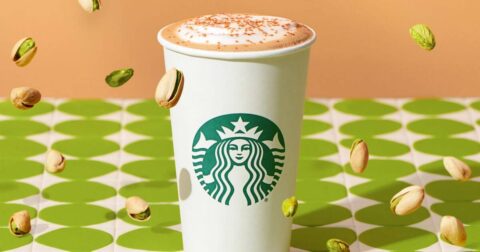Starbucks is a company we all have heard of as college students or working people; it is a place where we relax and re-energize ourselves for upcoming tasks and challenges.
With over 33,000 stores in 80 countries, of which 15000 are in its home country, i.e., the United States of America, it is the largest coffeehouse chain in the world. As of September 2022, its market capitalization was 97.19 billion, exceeding the value of many Tech giants such as Nokia Corporation and Ford Motors. Its Revenue in the year 2021 was nearly $29 Billion.
But have you ever wondered how Starbucks did it?
Letlet’sderstand:
History of Starbucks
Starbucks was started by Jerry Baldwin, Zev Siegl, and Gordon Bowker at Sea Seattle’s ske Place Market. But in the beginning, Starbucks didn’t sell espresso-based drinks. It sold packed coffee beans, tea, and spices in bags and cans. The business was growing, reaching Saturation in the 1980s, but they sold the company to Howard Schultz, who later became the director of Sales and Marketing at Starbucks. With his brilliant mind and Leadership skills, he gave Starbucks exponential growth and the height that we see today. After a business trip to Milan, Italy, he decided to serve espresso in a coffee house instead of coffee beans, and that’s where the real Game started.
During his trip to Italy, Schultz noticed that in Italy, people do not drink coffee as a drink to start their day, but they have strong emotions and expressions attached to it; getting inspiration from that, Schultz came back to States and started and first Starbucks coffee house in 1986 and the rest is history.
Strategies that Starbucks uses:
Convenience
If this is the case in your home, you probably understand that convenience is one of the reasons that Starbucks is so expensive. You will pay extra to have someone make coffee for you instead of making it yourself. If your Starbucks has a drive-through, you may not even have to leave your car when you get your coffee. Indeed, this is quite a lot of convenience and something most of you don’tdon’t pay for.
Service
Starbucks follows the Customer-Centric Business Model, which gives its edge over its competitor and gains a large customer base for a sustained period.
Location
Have you ever wondered why all Starbucks Outlets are easier to find and are generally located in downtown or significant commercial areas of the city?
Interior
A coffee shop is where people enjoy spending time. In a coffee shop, you can get work done or socialize. Chances are, if you stay for the day, you will be purchasing more products from them throughout the day; moreover, Wi-Fi-enabled outlets make it the first choice for the customers, and if you do not order anything at all, your experience gained their act as free marketing service for the customer.
Upsell
Starbucks trains its employees to upsell. If you purchase a cup of coffee, they may try and get you to go for a muffin or something to go with it, and they trained hard and are suitable for this. The upsell makes Starbucks a great deal of money each year.
Technology
Starbucks launched its Gift cards in 2001, its Loyalty points scheme, and its mobile app in 2009. It helped Starbucks to retain its customers because once you put money in your Starbucks card, it can only be used at Starbucks outlets for the exchange of its products, and being one of the pioneers in the field of its Digital sales(through the mobile app), they nailed the coming Digital boom.
Brand Image
Howard Schultz became the Brand Image of Starbucks and acted as a life savior from time to time, including during the financial crisis of 2008. It is like how Ratan Tata saved the Tata group in 2016 when he was reappointed as the chairman of the tata group after a failed attempt by Cyrus Mistry to overtake him.
Partnership
Starbucks partnered with major brands and companies worldwide to expand from its home country, not just small brands but with the most trusted companies in a particular country. Forex: Tata Group in India, Pepsi in Latin America, Nestle, and many more.
At last, Starbucks, in its Annual Meeting, has set an ambitious target of operating more than 55,000 stores in more than 100 countries worldwide by 2030, nearly doubling its revenuRevenuencreasing services in its basket to attract more customers.
